India
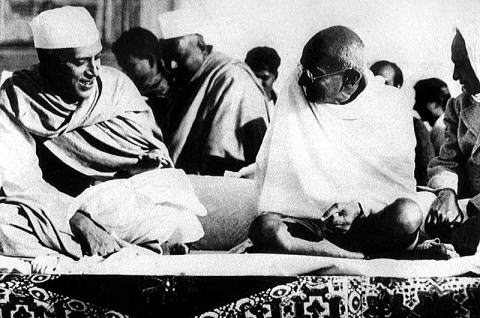 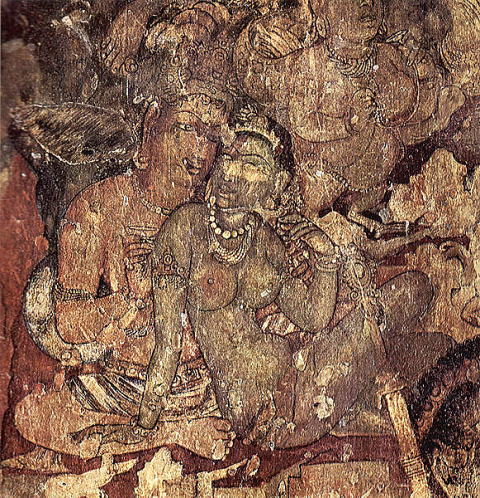
(L) Jawaharlal Nehru and Mahatma Gandhi in 1937.Nehru later became the
India's first prime minister in 1947.
(R) Painting in the sixth century found at the Ajanta Caves in Aurangabad,
Maharashtra, India.
India, officially the Republic of India, is a country in South Asia. It
is the seventh largest country by
geographical area, the second most populous country. Total population in
India is estimated to be
about 1,200,000,000.
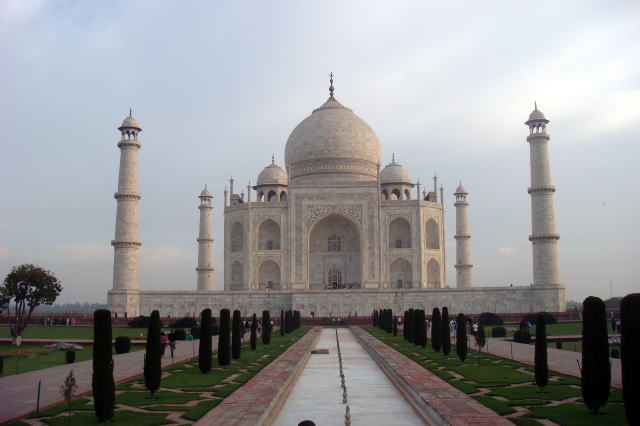
Taj Mahal completed in 1654 ( Photographed by Junhaku Miyamoto, M.D., in
March 2010 )
India's golden age was started from the third century. Science, technology,
engineering, art, logic,
literature, mathematics, astronomy, religion and philosophy flourished
under the patronage of Gupta
Empire.From the early eighteenth century, India gradually annexed by the
British East India Company,
and colonized by the United Kingdom from the mid-nineteenth century, India
became an independent
nation in 1947 aftera struggle for independence that was marked by widespread
non-violent resistance.
The Indian economy has grown steadily over the last two decades. However,
its growth has been
uneven when comparing different social groups, economic groups, geographic
regions, and rural and
urban areas.
Source: Wikipedia.
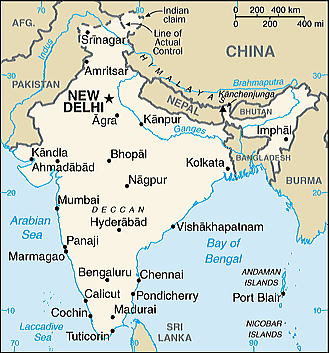
Source: University of Texas Libraries
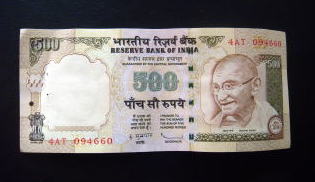 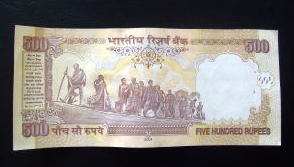 
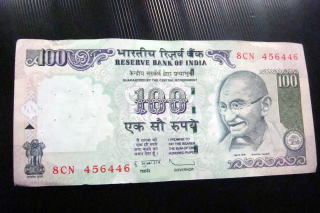 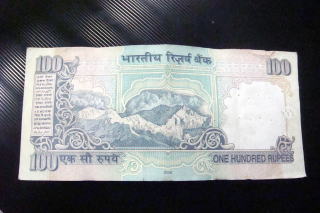
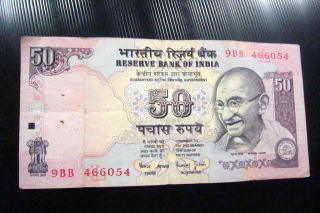 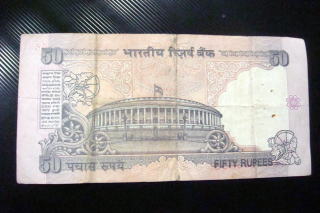
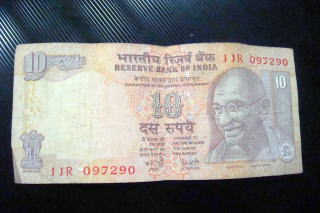 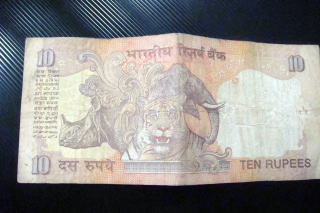
In India, money unit of a Rupee is used. The following exchange rate was
in March 2010.
100 Rupee= 205 Japanese yen
100 Rupee = 2.21 American dollar
100 Rupee = 1.65 Euro
120,000,000 smokers in India
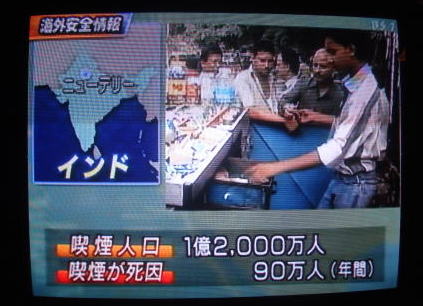 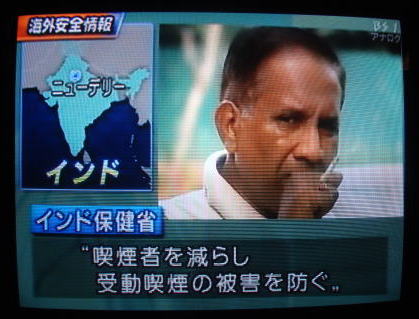
NHK TV Oct.6, 2008. Smokers in India, 120,000,000. Death from smoking,
900,000 per annuum.
Indian Minister of Health makes an effort to reduce the number of smokers
and to prevent
a second hand smoking.
100 million smoke beedi* in India: Report
* A beedi is a thin, often flavored, Indian cigarette.
A health ministry reported that about 100 million people, mostly the poor
and illiterate people, smoke beedi
in India and 200,000 tuberculosis deaths are due to these hand-rolled cigarettes.
The report, for the year
2004-2005 and termed as the first systematic analysis on the trend, said
beedi smoking was more harmful
than cigarette smoking. Beedi smoking contributes substantially to death
from tuberculosis in India. So said
Health Secretary Naresh Dayal. Beedi is the most widely used form of tobacco.
The 100 million people smoke
beedi, out of 240 million tobacco users. It said that the beedi smoking
causes the same diseases as cigarette
smoking does.
A beedi smoking is predominantly a male practice and is more prevalent
in rural areas. It is more common
to Muslims, closely followed by Hindus. . Its smoke has proven the carcinogens,
toxic poisonous substances.
It contains high levels of tobacco specific nitrosamines -the most potent
cancer causing agents. The report
said that in comparison to unfiltered cigarettes, beedi-smoke contained
higher levels of carbon monoxide,
ammonia, hydrogen, cyanide and phenol. It is harmful to not just smokers,
but those exposed to
second-hand smoke as well.
Source: May 13, 2008 sify.com.news.New Delhi.
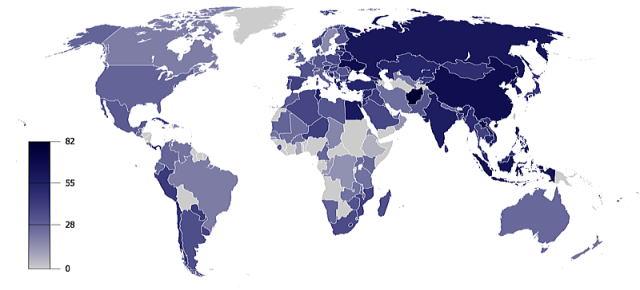
Percentage of males smoking any tobacco product.
India bans smoking indoors.
The Centre would strictly enforce the ban on smoking in public places from
October, 2008. A modified act
on no smoking in public places had been already enforced strongly across
the country from October, 2008,
The Government of India has notified revised Rules on Prohibition of Smoking
in Public Places in May, 2008.
As per the revised Rules, smoking is banned in the shopping malls, cinema
halls, public/private workplace,
hotels, banquet halls, discotheques, canteen, coffee house, pubs, bars,
airport lounge, railway stations.
People can smoke on roads or in their homes but not in any other place.
The adverse impact is more while
smoking inside closed environment than in roads or streets, he said. The
40 per cent of deaths occur in
India due to tobacco related diseases while two-third of deaths occur due
to smoking, junk foods and
usage ofdrugs.
Source: Expressindia.com Chennai, May 31,2008:
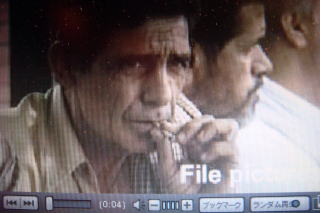
VIDEO India bans smoking inside.
India gears up for strict tobacco control.
Hotels, restaurants, airports, railway stations, offices, shops and factories
prepared to enforce a smoking
ban in public across India in a major effort to curb tobacco use that authorities
say kill estimated 900,000
people in the country every year. Police and food and drug authorities
will levy fines, whenever there is
a violation. Besides on their respective premises, government officers,
inspectors of central excise, sales
tax, transport and health departments, principals of schools can fine violators.
The new Smoking in Public
Places Rules 2008 would come into force from Oct 2, the birth anniversary
of Mahatma Gandhi.
Hundreds of thousands of people lose their lives due to smoking-related
diseases in India each year.
They are at risk from all cardiovascular diseases like heart attacks and
stroke and cancer. Government
estimates say that though the tobacco industry brings revenue of the 270
billion Rs to the country every
year, the treatment cost of the disease burden is at least the 300 billion
Rs.
Source: Oct 1,2008 New Kerala Com. New Delhi, India.
アジアの大国、インド。総人口は12億人に迫る、13億人を越える中国に次いで世界第2位である。首都はニューデリー、
最大の都市はアラビア海に面するムンバイである。多様な人種、民族、言語、宗教によって構成され、貧富の差も大きい。
綿加工業の伸びが著しいが、ITなどの情報サービスの海外進出など、注目を浴びている産業もある。
タバコの害が深刻、年間100万人が死亡 2008年2月に国際研究チームが、医学誌ニューイングランド・ジャーナル・オブ
・メディシンにインドでタバコ原因の疾病が増加し、2010年までに年間死者が約100万人に達するとの調査報告を発表して
いる。 研究内容はインド、カナダと英国の医師や研究者が協力し、調査員約900人を動員して、インド国内の110万世帯を
詳しく調べた。また、2001年から2003年に亡くなった74,000人と、現在生存中の78,000人についてのタバコ歴を追跡した。
これほど大規模な調査はインドでも初めてであった。 その結果、インド男性の30%、女性の5%がタバコを吸っていた。
タバコに関連した疾病による死者のうち、半数以上が貧困層や文字が読めない人々だった。 研究者によると、これは通常の
タバコよりも小さく、その分安いタバコ ( beedi )の流通が原因と見られるという。現在はタバコの包装紙に「文字」による
健康上の危険性を警告しているが、文字を読めない人々にとっては、その情報が伝わっていないと考えられている。すでに
世界保健機関(WHO)は喫煙による死者が今世紀中に10億人に達するとの予測を発表している。 インドのラムドス保健相は
この調査結果を重く見て、「特に貧しい人々への煙害教育を強化する」と述べ、包装紙へ印刷する警告を文字ではなく写真や
絵に変えるほか、安いタバコについても増税を検討するとしている。
引用 2008年2月14日 AP通信(ニューデリー)
インドが屋内禁煙に政策転換 多様性に富んだ国をまとめることは非常に難しいことであるが、インド政府は2008年10月
より「職場に於ける完全禁煙」を実施する。ラマドス保健相はバンガロール( Bengaluru )に於ける記者会見で、「私有、
公共にかかわらず、建物内での喫煙は禁止する。喫煙する者は建物から出て、道路脇で喫煙しなければならない」と述べた。
「このポリシーはすべての企業に適用される」と同相は述べ、「これからは企業は喫煙室も設置してはならない」と言い添え
ている。つまり建物内の喫煙室設置を禁止した。
喫煙規制は小規模のカフェ、レストラン、パブ、クラブ、ディスコにも適用される。ホテル内およびレストランの席数が
30席以上の場所では、仕切られた喫煙スペースの設置を認めたが、法令にのっとり個別に換気可能なことが許可条件となる。
この喫煙室への食事サービス提供に関しての情報はない。違反者に対する罰金は現行200ルピー(約528円)だが、同相は
対個人の罰金を1,000ルピー(約2,640円)、対企業・組織を5,000ルピー(約13,200円)にそれぞれ引き上げたい意向を
示した。政府は無煙化を主題にした一連の宣伝活動を行うが、ハリウッド・スターを含む著名人に協力を要請し、禁煙
ルールの周知徹底を図るという。また、2008年12月から、すべてのタバコ製品には絵入りの警告を入れる。タバコ
メーカーへの通達は既に済んでおり、3ヶ月の準備期間が与えられた。早い時期に、インドは自国のタバコの栽培と消費の
削減を目指す国際協定に署名している。その実現に向けて、政府はタバコ栽培者を薬草栽培に転向させる意向である。
インドで「職場に於ける完全禁煙」の実施を法令で定めた。 政権担当者は喫煙規制を実施した後に発生するサービス産業
への経済的影響を認めているが、国民の健康を守ることを最優先とすることに国民は理解を示すであろうとしている。
声明ではタバコ税収よりもタバコ病の治療に必要な医療費の方が高額であることも指摘している。
AFP通信によれば、世論調査で92%の人々が新喫煙規制法を支持している。84%の人がタバコ副流煙が深刻な健康障害を
引き起こすこと、そうした理由で諸外国が法的規制を設けていることを理解している。
タバコ産業へのFDI禁止へ、JTなどに打撃 政府インド政府は、たばこ産業への外国直接投資(FDI)を禁止する方向だ。
日本たばこ産業(JT)は現地法人JTインターナショナル(JTI)インドへの出資比率を50%から74%に引き上げる計画に
ついて外国投資促進委員会(FIPB)に承認申請しているが、却下される公算が大きくなってきた。インド事業の拡大を
狙う英国ブリティッシュ・アメリカン・タバコ(BAT)や米アルトリア・グループにとっても逆風となりそうだ。
シャルマ商工相はまた、「公共スペースでの喫煙が禁止されているのに、なぜ、タバコ産業へのFDIが必要だろうか」と
述べ、タバコ産業へのFDIに反対の姿勢を表明し、それよりもイノベーション(技術革新)や研究開発(R&D)、
環境分野へのFDIを促進すべきだとした。
インドでは現在、タバコの製造施設を新たに設けることは禁じられている。だが、この分野へのFDIを認めるかどうかに
ついて政府はこれまで明確な方針を示しておらず、保健・家族福祉省などが禁止を要求し、昨年末には商工省の産業政策
促進局(DIPP)が禁止案を策定したとの報道が流れていた。エコノミック・タイムズ(電子版)が財務省高官の話として
報じたところによれば、同案の成立に向けた最後の関門だったムカジー財務相は今月3日、タバコ産業へのFDIの禁止案を
支持する意向を示した。これを受け、DIPPは内閣経済問題委員会(CCEA)に同案の最終承認を求める運びだ。
引用 NNA February 22,2010
 Smoking Ban and Tobacco Control in Greece Smoking Ban and Tobacco Control in Greece
 Smoking Ban and Tobacco Control in Turkey Smoking Ban and Tobacco Control in Turkey
 Smoking Ban and Tobacco Control in India 2010 Smoking Ban and Tobacco Control in India 2010
India
 Arrival to India Arrival to India  India's hotels India's hotels  Dehli temples Dehli temples  Dehli Metro Dehli Metro  Indian railways Indian railways  New Dehli New Dehli
 Agra Agra  Taj Mahal Taj Mahal  Cheating in India Cheating in India Security in India Security in India  Smoking ban in India Smoking ban in India  India 2010 India 2010
 インド:職場での喫煙禁止、飲食店は完全禁煙 インド:職場での喫煙禁止、飲食店は完全禁煙
 2008年2月執筆 2008年10月加筆 2010年3月加筆 医学博士 宮本順伯 2008年2月執筆 2008年10月加筆 2010年3月加筆 医学博士 宮本順伯
★This Web site is link-free.
The report was written in February 2008 by Junhaku Miyamoto, MD, PhD.
Copyright(C) 2008 Junhaku Miyamoto, All rights reserved.
|